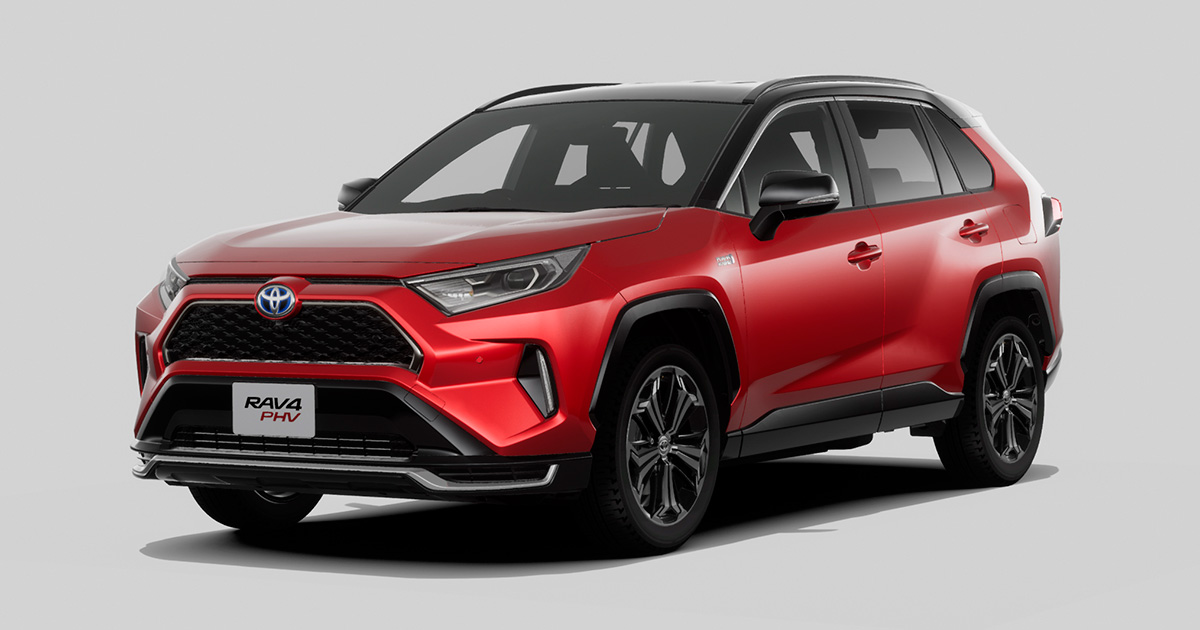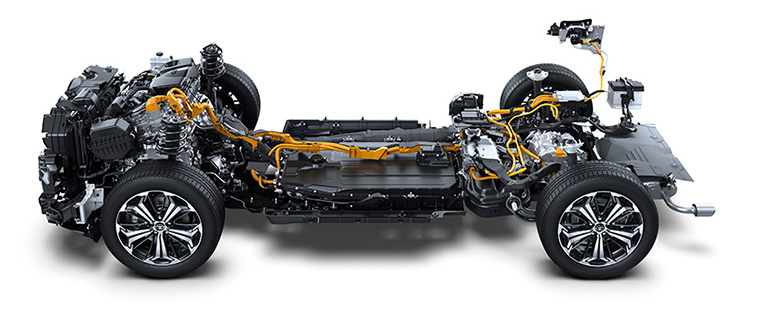So my estimates about battery specs are almost correct. I expected ~18-19kWh total and 14-14.5kWh usable. The MG2 is changed from the 88kW 3NM motor to the 134kW 5NM (sames as the Highlander Hybrid). The motor upgrade is necessary to accommodate more power from the battery so it makes sense. But they didn't change the ICE from 130kW to the upgraded 139kW version on the Highlander Hybrid, why not?
One interesting thing about the battery: the cells have the same capacity (51Ah) as the C-HR EV/UX300e. In fact the the battery pack is exactly 1/3 scaled down from the BEVs (96s1p vs. 96s3p and 18.1kWh vs. 54.3kWh), and the cells are arranged in a 4x24 configuration. Usually PHVs and BEVs use battery cells optimized for power density and energy density separately, making it impossible to use a common cell design. It seems Toyota is the first manufacturer to use a common cell for its PHVs and BEVs and this is a potential game changer. But the problem here is C-rate. The C-HR EV version has 3C giving it 150kW max. From the deep dive video above we can tell it has at least 100kW in EV mode, making it close to 6C.
6C on BEVs is not unheard of. Both the Model S P100D and Taycan Turbo S are rated close to that but these are extreme performance applications. To see Toyota giving the battery such high C-rate for a mainstream model is pretty surprising. Either they are really confident with the safety design or Panasonic has done some magic with the chemistry in these cells. But don't take my words as truth since these are only speculations.
The same capacity could be just a coincidence and the actual cell design might be significantly different.
But, it does brought me a question, we know (thanks to our Chinese colleagues) Toyota ChDM is doing a Avalon PHEV, should be based on this system? It does seems to have a higher battery pack between the axles to comply with a sedan lower ride height without compromising interior livability.
Even reducing the battery capacity (given it's a sedan it's more fuel efficient), battery cells will have the same height...
What's your opinion? Do you think this is "sedan-compatible"?
The height problem can be solved by using 18650 cylindrical cells. They could not reduce the height of prismatic cells. The ChDM Corolla E+ already uses 18650, and they will "sidegrade" the C-HR EV to 18650 in the near future. So it makes sense at least the ChDM Avalon PHV also uses 18650 to take advantage of commonality. What I think will happen is Tesla will gradually reduce cylindrical cell production and migrate to prismatic, therefore releasing a lot of capacity at Panasonic to provide these cylindrical cells to Toyota.
To qualify for China's PHV subsidies and NEV credit the Avalon PHV needs a minimum range of 50km, extrapolating from the Corolla E+ I expect it to have 12-13kWh total and 9kWh usable capacity.


